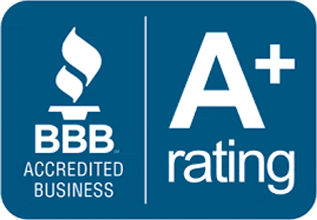Intoxilyzer 8000 and the Lack of Substantial Compliance
When fighting a DUI breath test case, the attorney must look carefully at the records related to the particular Intoxilyzer 8000 instrument used. Each instrument has a serial number which can be found on the breath test results during discovery. The attorney can also find all of the electronic data for that breath test machine on the FDLE website.
The FDLE website provides links to a tremendous amount of information about all breath test samples taken on that machine, annual departmental inspections and monthly agency inspections, and field notes and other correspondence showing any observed irregularities.
Often, the documents are “cryptic” because they attempt to explain an irregularity in a way that suggests that the problem does not affect the accuracy and reliability of the instrument.
Read more about how to win a DUI breath test case by filing a motion to suppress the BAC reading because of a lack of substantial compliance with the rules for maintaining the breath test machine.
Attorney for Intoxilyzer 8000 Compliance Problems
An experienced DUI defense attorney will audit the breath test machine used in your case to find problems with its use or maintenance. If the attorney finds problems, the attorney might file and litigate a “Motion to Suppress or Exclude the Breath Test Result for Lack of Substantial Compliance.”
Problems with these 16-year-old machines are pervasive. Filing the motion alleging the lack of substantial compliance often forces the prosecutor to make an offer to resolve the case and avoid the hearing.
The attorneys at Sammis Law Firm are experienced with filing and litigating motions to show a lack of compliance or substantial compliance with the administrative rules. Contact our attorneys to discuss your case if you were accused of DUI after submitting to a breath test.
Click here to read more about our Recent Case Results in DUI Breathalyzer Cases.
Call 813-250-0500 today.
Motion to Suppress or Exclude Breath Test Results for Lack of Substantial Compliance
COMES NOW the Defendant, _________, by and through the undersigned attorney pursuant to the Florida Rules of Criminal Procedure 3.190(h), and hereby makes the following showing:
- The Defendant is charged with violating Florida Statute 316.193-2a, Driving Under the Influence.
- The Defendant was arrested on __[date and time]___ by ___[arresting officer] at ____[address of arrest]___.
- After the arrest, the arresting officer requested that the Defendant submit to a breath test machine, the Intoxilyzer 8000, serial number 80-00XXXX.
- The Defendant was advised that refusing to submit to a breath test would result in a suspension of driver’s license or other adverse consequences.
- The breath test results were 0.XXX and 0.XXX.
- The Florida Department of Law Enforcement (FDLE) promulgated the rules governing the Intoxilyzer 8000 testing, which is known as the “Implied Consent Program” under Chapter 11D-8.
- The Intoxilyzer 8000 used in this case and all breathalyzer instruments in the State of Florida must be subjected to monthly inspections completed by an agency inspector. Additionally, annual inspections are required to be performed by FDLE Departmental Inspectors, often called the “department inspection.”
- During the agency inspections, the inspection must comply with all the rules in Form 39.
- Although Form 30 provides the following rule: __________, the agency inspector failed to comply with that rule because _______.
- In addition to the monthly agency and annual departmental inspections, an additional one is required after the instrument is “returned” from a repair facility.
- The Intoxilyzer 8000 used in this case was not in compliance with Florida Administrative Code 11-D8 when the Department Inspector, ___[name]___, did an annual inspection on ___[date]___ and the instrument was removed from service.
- [Alternatively – “The Intoxilyzer 8000 used in this case was not in compliance when it was removed from service when ___[state reason it was removed from service]].
- The instrument was sent to Enforcement Electronics Services, Inc., 3705 Century Blvd., Suite 2, Lakeland, FL 33811-1395.
- The repairs were made sometime between __[date]__ and ___[date]___.
- On ___[date]___, while the instrument was still at the Enforcement Electronics facility in Lakeland, FL, the FDLE Departmental Inspector did another department inspection.
- [Add discussion about the number of log-ins]
- [If multiple log-in attempts were made before the passed inspection, it calls into question whether the departmental inspector unplugged or otherwise caused a power failure before completing the first test and whether the passed inspection was the second or subsequent inspection. If the instrument was turned off, the plug was pulled, the data cord was pulled, or some other procedure was used to dump any data showing the failed inspection. The machine would not be in substantial compliance because FAC rules require certain documentation when a departmental inspection fails. Such documentation was not written in this case. Specifically, the departmental inspector must document the failure in his inspection report.]
- The Instrument was returned to ___[agency]___ on __[date]___.
- Agency inspector, ___[name]___, performed an agency inspection on ___[date]___.
- The agency inspector must then perform an agency inspection before returning the instrument to service under Rule 11D-8.006.
- Both Rule 11D-8.006 (governing agency inspections) and 11D-8.004 (governing departmental inspections) require a new inspection after an instrument is “returned” from a repair facility.
Memorandum of Law
The implied consent law makes the Florida Department of Law Enforcement (FDLE) responsible for regulating the inspection, operation, and registration of the breath test instruments utilized in prosecutions for Driving Under the Influence (DUI) of alcohol or controlled substances. Florida Statute Section 316.1932(1)(a)(2).
The statute requires substantial compliance with these regulations for the breath test results to be admissible. For an analysis of a person’s breath to be considered valid under this statute, the testing must comply substantially with the Florida Administrative Rules. Any substantial difference between the approved rules and the actual testing procedures in an individual case would render the test result invalid and inadmissible at trial.
Florida Administrative Codes, Chapter 11-D-8.004(2) provides in part as follows:
“Any evidentiary breath test instrument returned from an authorized repair facility shall be inspected by the Department prior to being placed in evidentiary use.”
Florida Administrative Codes, Chapter 11-D-8.002(13), provides as follows:
“Authorized Repair Facility – the Department, the breath test instrument manufacturer, an entity authorized by the breath test instrument manufacturer to service and repair such breath test instrument.
Under Chapter 11-D-8.002(13), FDLE departmental inspectors can be considered authorized to repair the machine.
Rule 11D-8.003(4) states:
A Departmental Inspection performed in accordance with Rule 11D-8.004, F.A.C., validates the approval, accuracy, and reliability of an evidentiary breath test instrument.
Rule 11D-8.004(2) provides:
“Registered breath test instruments shall be inspected by the Department at least once each calendar year, and must be accessible to the Department for inspection. Any evidentiary breath test instrument returned from an authorized repair facility shall be inspected by the Department prior to being placed in evidentiary use. The inspection validates the instrument’s approval for evidentiary use.
In this case, the departmental inspection that occurred on ___[date]___ becomes the controlling document to satisfy the requirements for Rule 11D-8.004(2) “Annual Inspection.” That departmental inspection is needed to satisfy the FAC requirement that the instrument be inspected by the Department at least once each calendar year for the instrument to comply substantially.
The Intoxilyzer 8000 instrument used in this case was not in substantial compliance with Rule 11D-8.004(2) since the departmental inspection was conducted at Enforcement Electronics, and the repair was not performed after the Intoxilyzer was “returned from repair” to the Hillsborough County Sheriff’s Office.
Since the Departmental Inspection on ___[date]___ was not conducted after the instrument was “returned from repair,” the prosecutor for the State Attorney’s Office cannot lay the proper predicate to show that the Rule for an annual inspection under 11D-8.004.
Because of the failure to substantially comply with the FDLE rules, the breath test results, in this case, were obtained in violation of the Defendant’s due process rights, rights to be protected against unreasonable search and seizure, and right to privacy as protected by the Fourth, Fifth, and Fourteenth Amendment as guaranteed by the United States Constitution and Article One, Section 9, 12, and 23 of the Florida Constitution.
Therefore, Defendant respectfully requests that this Order issue an order that suppresses or excludes the breath test results obtained in this case from the trial.
Examples of Substantial Compliance Problems on the Intoxilyzer 8000
To determine whether substantial compliance issues exist in your breath test case, your attorney must obtain all of the discovery and electronic data on the breath test machine used. Your attorney also needs to carefully look at the requirements of Form 39 to see if any requirements were unmet.
According to the Agency Inspection Procedures in Form 39 for the Intoxilyzer 8000 in Florida, a lack of substantial compliance can be alleged if any of the following occurred:
- Pre-Inspection Procedures
- The agency inspector failed to prepare at least two simulators and allow them to warm up for at least thirty minutes before the first analysis.
- When changing solutions, the agency inspector failed to allow the new solution to warm up for at least ten minutes after the heater light turned off for the first time.
- The agency inspector failed to ensure that each simulator maintains an air leak-resistant seal and an operational temperature of 34 C (+/- 0.2 C).
- The agency inspector failed to use distilled or deionized water for the Alcohol Free and Interferent Detect tests.
- The agency inspector failed to use Class A glassware when measuring solutions.
- The agency inspector failed to use approved and non-expired alcohol reference solutions and non-expired dry gas standards from an approved source during the applicable portions of the inspection.
- The agency inspector failed to enter his or her last name, first name, and middle initial at USER or INSPECTOR prompts.
- The agency inspector failed to adjust the date or time.
- The result must be reported to three decimal places in g/210L.
- For the ALCOHOL-FREE TEST, the agency inspector failed to:
- observe 0.000 results for each air blank.
- observe the instrument abort the inspection process if the air blank result was not 0.000.
- Problems with repeated tests include:
- After any test was out of compliance, the instrument failed to prompt the Agency Inspector to REPEAT (Y/N) the test.
- Although each test may be repeated once, the agency inspector attempted to repeat a test more than once.
- If the tests were repeated once, the agency inspector failed to enter the REASON when prompted (because the reason was NOT recorded in the Remarks section of FDLE/ATP Form 40 Agency Inspection Report – Intoxilyzer 8000.
- During the Diagnosis Check:
- the results of the DIAGNOSTIC CHECK (Pre-Inspection) must show OK for each diagnostic check.
- If the diagnostic check result is not OK, the instrument fails to abort the inspection process.
- The agency inspector failed to enter the number of simulators used during the inspection.
- During the ALCOHOL-FREE TEST, when PROVIDE SAMPLE NOW was displayed, the agency inspector failed to:
- introduce an alcohol-free breath sample into the instrument;
- after entering the alcohol-free sample, the result was not 0.000;
- failed to rinse his or her mouth with mouth alcohol solution;
- when PROVIDE SAMPLE NOW was again displayed, the agency inspector failed to introduce a breath sample into the instrument;
- having entered a breath sample into the instrument during the mouth alcohol test, the result was not SLOPE NOT MET;
- attach a simulator containing 500 mL of distilled or deionized water to the instrument;
- conduct three (3) analyses;
- have a result of 0.000 beings returned for each analysis.
- During the INTERFERENT DETECT TEST, the agency inspector failed to:
- attach a simulator containing 3 mL of acetone stock solution and 500 mL distilled or deionized water to the instrument:
- conduct three (3) analyses;
- observe result of INTERFERENT DETECT for each analysis.
- For the 0.05 g/210L TEST, the agency inspector failed to:
- attach a simulator containing 0.05 g/210L alcohol reference solution to the instrument;
- properly enter the lot number and expiration date of the alcohol reference solution used;
- conduct three (3) analyses; or
- the result of each analysis was not within the acceptable range.
- For the 0.08 g/210L TEST, the agency inspector failed to:
- attach a simulator containing 0.08 g/210L alcohol reference solution to the instrument;
- enter the lot number and expiration date of the alcohol reference solution used;
- conduct three (3) analyses;
- have a result for each analysis that was within the acceptable range.
- For the 0.20 g/210L TEST, the agency inspector failed to:
- attach a simulator containing 0.20 g/210L alcohol reference solution to the instrument;
- enter the lot number and expiration date of the alcohol reference solution used;
- conduct three (3) analyses;
- have a result of each analysis that was within the acceptable range.
- For the 0.08 g/210L DRY GAS STANDARD TEST, the agency inspector failed to:
- attach a cylinder containing 0.08 g/210L dry gas standard to the instrument;
- enter the lot number and expiration date of the dry gas standard used;
- conduct three (3) analyses;
- have a result for each analysis that was within the acceptable range.
- For the DIAGNOSTIC CHECK (Post-Inspection), the agency inspector failed to:
- have a result of OK for each diagnostic check;
- observed the instrument abort the inspection process if any diagnostic check results were not OK.
- The agency inspector failed to review the remarks and enter Y/N;
- The agency inspector failed to enter Y/N to show whether the instrument complied or did not comply with the requirements of Chapter 11D-8, FAC.
- If the instrument did not comply with Chapter 11D-8, FAC, the agency inspector failed to remove the instrument from service and notify the Department Inspector.
- The agency inspector failed to record the results of the Agency Inspection on FDLE/ATP Form 40 Agency Inspection Report – Intoxilyzer 8000.
- The agency inspector failed to make the results electronically available to the Department within five (5) days of completing the inspection.
Lack of Compliance with Rules for the Intoxilyzer 8000
The attorneys at the Sammis Law Firm strive to stay current on all issues affecting the Intoxilyzer 8000 in Florida. We focus on DUI cases in Hillsborough County, FL, and the surrounding areas. We fight breath test cases after a DUI arrest in Tampa, FL.
At Sammis Law Firm, we have offices in Tampa, Clearwater, and New Port Richey, FL.
Click here to learn more about how to use the Intoxilyzer 8000 records on the FDLE website to find out whether the administrative rules were followed during the yearly and monthly inspections.
Call 813-250-0500.
This article was last updated on Friday, July 26, 2024.
Free Consultation
Submit this form to request a free and confidential consultation with one of our attorneys.
Our Office Locations
Tampa Office:
Sammis Law Firm, P.A.
1005 N. Marion St.
Tampa, FL 33602
(813) 250-0200
New Port Richey Office:
Sammis Law Firm, P.A.
7509 Little Rd.
New Port Richey, FL 34654
(727) 807-6392
Clearwater Office:
Sammis Law Firm, P.A.
14010 Roosevelt Blvd. #701
Clearwater, FL 33762
(727) 210-7004
Our Attorneys












